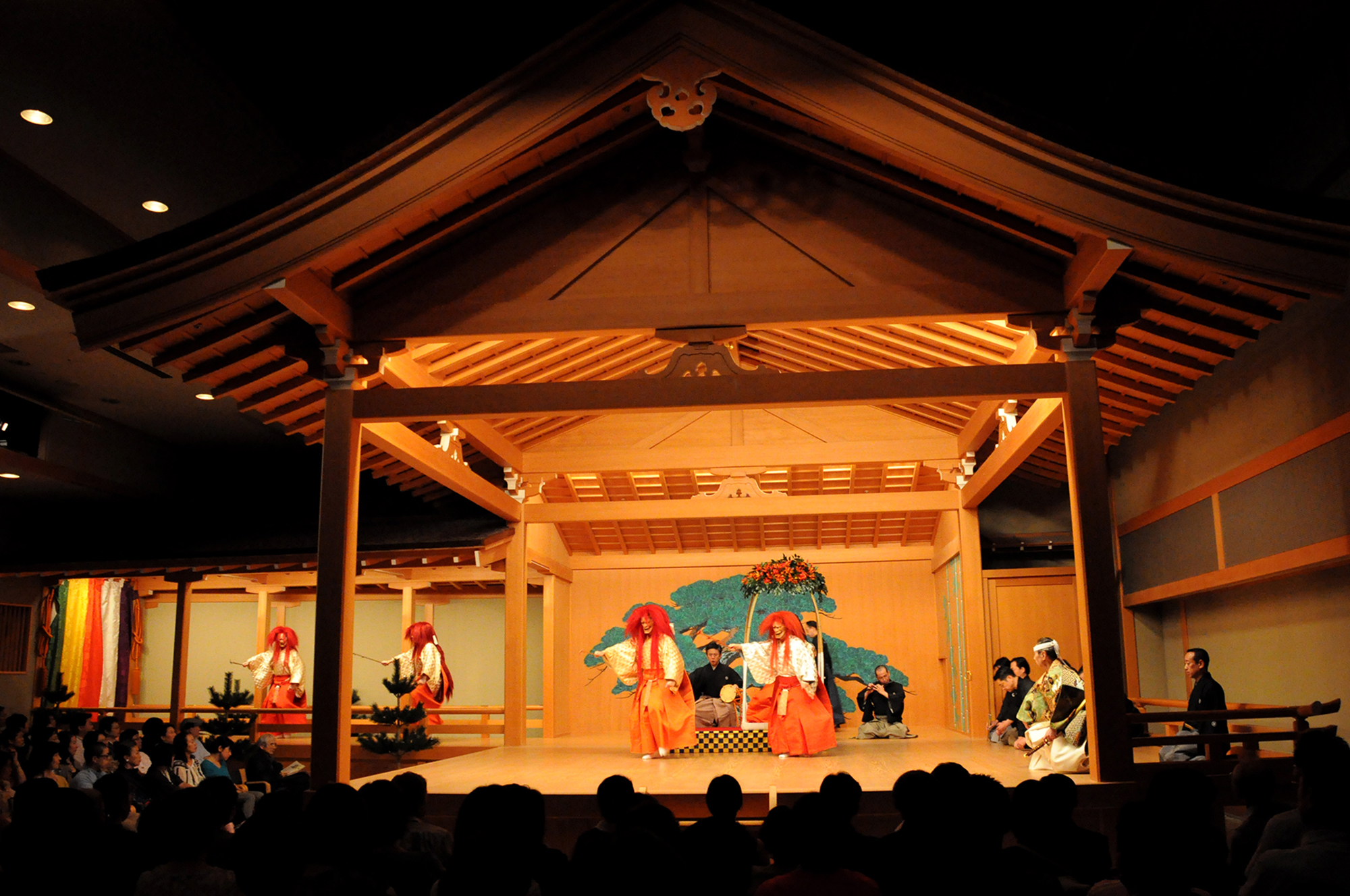Basic Understanding 2
Before visiting Noh theater: about applause and hand clapping

AuthorYuki Ishida

It is said that there was no applause for Noh performances for the beginning.
Nowadays, though, there is usually three timings for applause in Noh play: First, when Shite (*1), or Shite-kata, exits the stage at the end of the play (*2) (chant); Second, when Waki (*3) , or Waki-kata, exits the stage; And third, when Hayashikata (*4) musicians exit the stage after Tsukurimono, or props, is cleared away in the case that there is any on the stage. (There is many exceptional cases.)
A Nohgakushi (Noh player) continues playing his role until he exits the stage and never answers the applause to the last. You may feel curious about no bowing or hand-waving by the player unlike in other theatrical performances or musical concerts.
Some insist that there should be no applause in Noh according to the conventional manner. Then, how do players on the Noh stage think about applause?
“I never want to be praised for my good play, but hope to feel either the audience enjoys the Noh performance or not. I think that any player has the similar feeling both in the past and present. We always play with heart and soul keeping the tension for not breaking lukewarm applause in the middle but for earning a great ovation at last.”( Noh-gakushi Waki-kata Shitagakari-Hoshoryu, Mr. Seigo Mikuriya)
What do you imagine as an “ideal applause”? I think it may be that there is no applause when Shite and Waki exit the stage, but the audience breaks to applaud from their emotion around when Hayashikata musicians exit and the applause will be massive when there is nobody on the stage... In such a situation, players’ and audience’s hearts are in tune and both can realize the wonderfulness of the performance.
Though, there are many exceptions as I wrote. For example, there is a chant where a sense of exaltation can be kept better when the applause starts just after the end of the Shite’s performance. Oppositely, in the case of a quiet and tragic story, the audience should not applaud until the final end even when the performance is really outstanding. There is no clear answer.
With such exceptions, my answer is: Each audience breaks applause depending on one’s own sensibility, but holds it until the final end of the play for the other audience (not to destroy the feeling of unity in the place, or not to become an encumbrance to a person who hopes to enjoy the resonance). Probably it is efficient to applaud freely but with restraint as when you appreciate any art or entertainment.
*1 Shite: the protagonist player, who positions the center of the stage and often wears a mask
*2 End of the play (chant): A Noh play ends at “Tome-byoshi”, where Shite stamps two times with both feet (one time for each foot) on the stage.
*3 Waki: the second player, who plays opposite to Shite and draws out Shite’s part (Reference: Shimogakari-Hoshoryu “Shite-kata to Waki-kata ni tsuite (About Shite-kata and Waki-kata)”)
*4 Hayashikata: Noh instrumental part with four Japanese music instruments: Fue, Kotsuzumi, Otsuzumi and Taiko